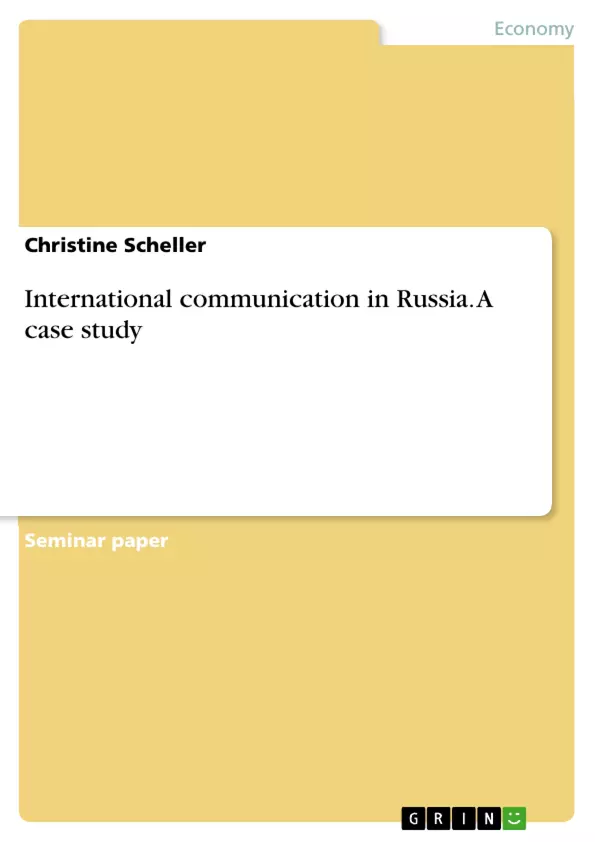At first in the introduction there is a description of international communication and why it is important in daily international business.
In order to understand the theoretic background communication framework and as well cultural framework are signed within different examples. Regarding to the cultural dimensions different studies which were made are included.
In the practical part a special critical interaction shows the risks and problems with intercultural communication in an economic company in Russia. Regarding to that recruiting strategies and developing skills belong to it as remarkable contents.
Than a solution or advancements have being given for a preparation to improve intercultural communication. Finally a conclusion with a short summary was also being added.
Inhaltsverzeichnis (Table of Contents)
- Introduction
- Cultural communication framework
- The aspect of communication in international business
- The aspect of cultural diversity in international business
- Cultural dimension of human resource management
- Hofstede's dimensions
- Hall's statement
- Analysis of critical interaction
- Special recruiting strategies
- Developing skills
- Solution/ advancement
Zielsetzung und Themenschwerpunkte (Objectives and Key Themes)
This paper examines the importance of effective international communication within the context of global business, using a case study focused on Russia. It aims to explore the theoretical frameworks of cultural communication and its impact on international human resource management (IHRM). The analysis will highlight challenges and strategies for successful intercultural interactions in an international business setting.
- The role of communication in international business success
- Cultural diversity and its impact on international management
- The application of cultural dimension theories (Hofstede, Hall) to IHRM
- Challenges of intercultural communication in international business operations (using a Russian case study)
- Strategies for improving intercultural communication and collaboration
Zusammenfassung der Kapitel (Chapter Summaries)
The Introduction establishes the importance of successful international operations and effective internal communication networks for achieving competitive advantage in a globalized marketplace, highlighting the increasing need for intercultural competence in management. The section on Cultural Communication Framework explores the theoretical underpinnings of communication and cultural diversity in international business. The Cultural Dimension of Human Resource Management section delves into the application of established models like Hofstede's dimensions and Hall's communication styles, providing a framework for understanding cultural influences on management practices. The Analysis of Critical Interaction chapter examines specific challenges and risks of intercultural communication within a Russian business context, focusing on recruiting strategies and skill development.
Schlüsselwörter (Keywords)
International communication, intercultural management, cultural diversity, human resource management (HRM), international human resource management (IHRM), Hofstede's cultural dimensions, Hall's communication styles, global business, Russia, recruiting strategies, cross-cultural competence.
- Citation du texte
- Diplom Christine Scheller (Auteur), 2008, International communication in Russia. A case study, Munich, GRIN Verlag, https://www.grin.com/document/123007



